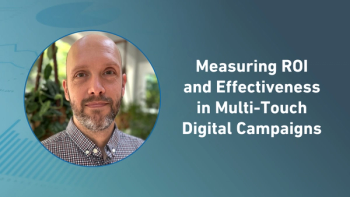
Study Events: Keeping your Trial Master File Up-To-Date as Your Trial Evolves
It's a given that events will happen during the course of the trial that will require not just new documents, but new sets of documents.
Even if your eTMF includes high-quality tools for planning the documents needed for a specific clinical trial, it’s a given that events will happen during the course of the trial that will require not just new documents, but new sets of documents. Some common events include:
- Protocol amendments
- Updated Investigator Brochures
- Unplanned blind breaking
- New vendors
There are many more examples.
In this article, we’ll take a closer look using an example of a protocol amendment event. According to the article
Anatomy of an Amendment
A protocol amendment always includes the amendment itself (TMF Reference Model ID 02.01.04, Protocol Amendment) and a signature page from each active site documenting investigator agreement to the protocol amendment (TMF Reference Model ID 05.02.03, Protocol Amendment Signature Page). Beyond that, the documents needed to support the amendment vary greatly depending on the nature of the protocol changes and the countries and sites in which the studies are being conducted. Some examples of other documents that may be needed to support an amendment include:
- Country Level Amendment and/or Translation of Amendment. A modified amendment may be needed for a country, for example, to allow for specific assessment techniques permissible in that country. The amendment may need to be translated to the local language, and the local version back translated, both of which may require certificates of translation.
- IRB/IEC Submission (04.01.01) and Approval (04.01.01). FDA requires that “A sponsor shall submit a protocol amendment describing any change in a Phase 1 protocol that significantly affects the safety of subjects or any change in a Phase 2 or 3 protocol that significantly affects the safety of subjects, the scope of the investigation, or the scientific quality of the study.” They also require that “The change has been approved by the IRB with responsibility for review and approval of the study.” Therefore, most amendments would have to be submitted to an IRB, but a sponsor could not submit an amendment outside of the FDA’s requirements as, strictly speaking, it would not require IRB approval. In addition, the IRBs/IECs affected may be a combination of central and local committees, not necessarily one per site.
- Regulatory Submission (03.01.01) and Approval (03.01.01). For similar reasons, these would often but not always be required. In addition, country specific regulations may result in submissions and/or approvals being needed in some countries but not others. Local language versions would generally require back translation to English.
- Protocol supporting documents such as Informed Consent Form (02.02.03), Informed Consent Form (02.02.03), etc. These documents are closely related to the protocol, and changes to them may result in an amendment and vice versa. They may also require country or even site-level versions and translations.
To complicate handling the event in eTMF, some of these documents might not be needed for all countries, or for all sites (for example, sites that are terminated or completed).
It’s clear that significant expertise is needed to determine exactly which documents are needed to fully support a protocol amendment. For large studies, an amendment could result in the need to collect hundreds or even thousands of documents.
eTMFs range from handling study events elegantly to not handling them at all. At the top end, users will be able to initiate the event in eTMF, select the exact documents, countries and sites involved, and create placeholders to track the expected documents. eTMF will also collect an event date that allows a due date to be assigned for collecting and approving the documents in eTMF (generally based on an offset such as 60 days after the event). This allows for a repeatable process and prevents documents from being overlooked or not collected in a timely manner.
In more basic systems, no special tools are provided and a manual procedure is needed instead. In this case, it’s highly advisable to create a work instruction with an associated checklist. An event-specific checklist can then be created (probably in Excel) with a list of documents that must be collected for each country and site. This process is certainly workable, but is more labor-intensive and error-prone.
Finally, it’s important to recognize that, as the study progresses, additional documents may be needed for countries or sites that are added later. If a site is initiated after the protocol has been amended several times, signature pages (and potentially IRB/IEC submissions and approvals) must still be collected. If the eTMF doesn’t support this in an automated manner, it will be necessary to revisit past events to see what documents need to be collected for new countries and sites.
In conclusion: process remains all-important. A sophisticated eTMF can remove much of the manual labor for you, but it can’t tell you what exact documents are needed for each event. A well-designed and documented process works with technology to ensure quality and compliance.
Newsletter
Stay current in clinical research with Applied Clinical Trials, providing expert insights, regulatory updates, and practical strategies for successful clinical trial design and execution.






.png)



.png)



.png)
.png)
